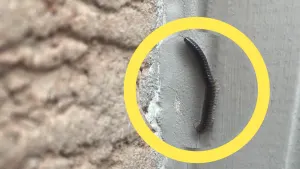
Thinking of bringing your outdoor plant indoors? Read this first
Five steps to follow when bringing plants indoors for the winter
Your summer blooms may be long gone, but the longevity of your plant doesn't have to end.
You may be able to extend the life of your garden by bringing some plants inside for the winter.
However, before you open the doors to your chlorophyll companions, there are important things to consider. Below are five steps to follow when bringing plants indoors for the winter, courtesy of Mark Cullen, a horticultural expert.
1. Look for bugs
This is the most time-consuming task! You will want to comb through the plant, leaf by leaf, and take away anything that is crawling. Egg casing and larvae also need to go. And be aware of things like spider mites, as they can jump on plants inside your home. Cullen says that most of the pests will be on the underside of the leaf. So lift that plant right up. Remove any fall foliage that has fallen into the pot. Crinkled leaves can act as a good hiding spot.
SEE ALSO: How to save seeds from your garden to grow next season
2. Spray and wipe
This is the fun part! Create your own soapy solution and add it to a spray bottle. Soak the plant down and let the soap sit on the leaves for a few minutes. An easy rule of thumb is 1½ tablespoons of soap to 4 cups of water. Then wipe each leaf clean. Cullen says that this will help your plant breathe better inside your home. Plus, the leaves will look so shiny!

It's important to clean your plant leaf by leaf when bringing it indoors (Rachel Schoutsen/The Weather Network)
3. Repot
This step is optional. Some plants will benefit from being repotted. You can also use this as a time to shake out additional bugs and add some fresher soil.
4. Find the perfect inside spot
This is a little trickier than it seems. Cullen says the best spot for an inside plant is close to a south-facing window; this way, it gets ample light. However, the window should not be close to any drafts from vents or doors. And it should not be around any vents that are blowing hot air during the winter, as this will dry your plant out.

Make sure your plant gets ample light. (Rachel Schoutsen/The Weather Network)
5. Keep them hydrated
The last step is a long-term commitment. Cullen mentioned that the toughest task is going to be keeping your plant happy during our dry winters, especially in this indoor environment. So spray the leaves with water and make sure you do not overwater the soil, as this can lead to rot.
Your plant will thank you for following these steps! And soon enough, you will be cherishing its future blooms in the spring.











